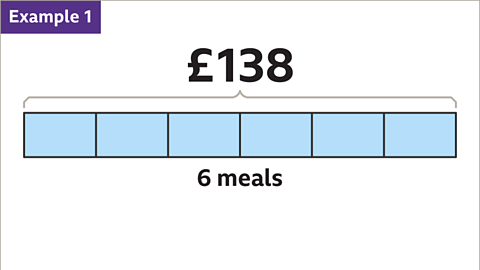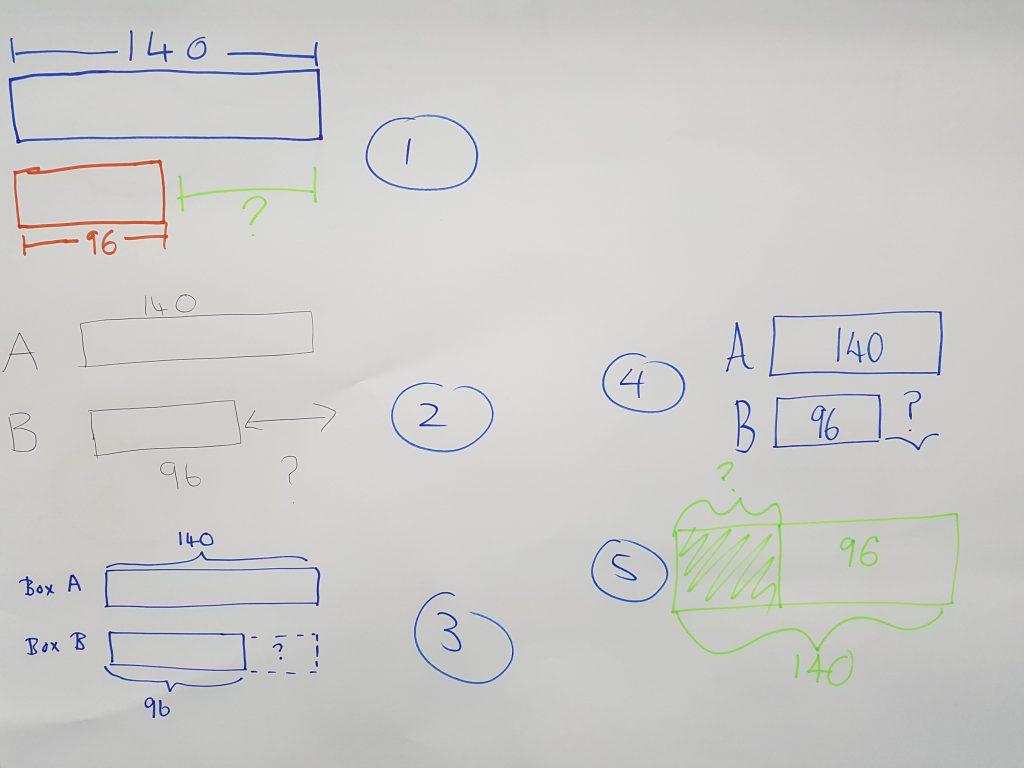How bar model drawing techniques transform traditional math instruction
Wiki Article
Exploring Bar Version Drawing Techniques: A Comprehensive Guide to Visualizing Mathematics Concepts
Bar design attracting techniques work as a valuable resource for both educators and trainees in imagining mathematical concepts. These versions streamline complex numerical connections, assisting in the understanding of addition, department, multiplication, and subtraction. This overview outlines reliable techniques for implementing bar designs, fostering energetic involvement and real-world connections. As visitors discover the practical applications and training suggestions, they will uncover how these methods can change their technique to mathematics.Recognizing the Essentials of Bar Version Illustration
Bar version drawing acts as an effective visual tool in mathematics, helping with the understanding of problem-solving strategies and mathematical partnerships. This method includes representing numbers and their partnerships via rectangular bars, making it simpler to envision operations such as enhancement, division, subtraction, and multiplication. Each bar's length matches to a particular value, allowing learners to contrast quantities and recognize percentages clearly.To produce a bar model, one starts by determining the issue's crucial elements, commonly simplifying right into components that can be aesthetically stood for. In a simple addition trouble, 2 bars can be attracted, with their lengths standing for the addends. The combined size illustrates the amount. Furthermore, bar versions can be adjusted for more intricate problems, including proportions and portions, by changing the bars appropriately. Mastering these basics lays a strong structure for reliable analytic and deeper mathematical comprehension.
Benefits of Using Bar Models in Math
Making use of bar designs in mathematics offers numerous benefits that enhance knowing and comprehension. These graphes aid trainees in comprehending complicated principles by breaking them down into manageable parts. Bar designs offer a clear structure for showing connections between numbers, making abstract ideas a lot more concrete. They promote a much deeper understanding of mathematical operations and help with analytical by allowing learners to imagine the data they are functioning with.Bar versions support the advancement of critical assuming skills, as trainees need to assess and analyze the visual information to draw final thoughts. This approach encourages energetic interaction with the material, enhancing retention and proficiency of mathematical concepts. By cultivating a solid structure in visual proficiency, bar models equip learners to approach different mathematical challenges with confidence. Generally, the combination of bar models into mathematics education verifies beneficial in cultivating both comprehension and analytical capabilities among pupils.
Using Bar Versions to Addition and Subtraction
Bar versions function as an efficient device for visually representing enhancement and subtraction troubles. By illustrating the connection between numbers, they boost understanding and assist in analytic. On top of that, real-life applications of these versions can aid learners comprehend mathematical principles in practical contexts.Standing For Enhancement Visually
Visual help can greatly boost their understanding of these operations when students run into enhancement and reduction issues. Bar models offer as effective devices for representing addition. By separating a rectangular shape into segments that represent the numbers involved, pupils can imagine the connection between the quantities. If a student requires to include 3 and 5, they can produce a bar separated into two sections: one area standing for 3 and the various other standing for 5. This clear representation not just streamlines the enhancement procedure yet also reinforces the concept of combining amounts. As trainees manipulate these aesthetic help, they develop a much deeper comprehension of enhancement, causing enhanced problem-solving abilities and higher confidence in their mathematical capacities.
Reduction With Bar Models
Although subtraction is usually perceived as a much more complex procedure than addition, bar versions can successfully clarify this procedure for pupils. By aesthetically standing for the quantities included, pupils can much better comprehend how numbers associate with each other. In a bar design for reduction, one bar represents the total amount, while another shows the quantity being deducted. This aesthetic distinction helps pupils grasp the principle of "eliminating." If a bar reveals 10 devices, and one more bar representing 4 systems is gotten rid of, pupils can easily see that 6 devices stay. This method not only cultivates understanding of subtraction but additionally aids in creating problem-solving abilities, permitting students to picture their mathematical thinking and enhance their overall understanding of mathematical ideas.Real-Life Application Instances
Comprehending reduction with bar models lays a structure for applying these methods in real-life situations. In various contexts, such as budgeting or shopping, individuals can envision just how much cash remains after costs. If a person has $50 and invests $20, a bar design can stand for the overall quantity and the invested section, highlighting that $30 is left. In addition, parents can make use of bar models to assist children recognize the amount of more things need to be included to finish a collection, such as having 3 apples and needing five. This graph simplifies complex troubles, assisting in understanding and retention. Inevitably, bar designs work as efficient tools in everyday decision-making, enhancing mathematical understanding in sensible circumstances.Envisioning Reproduction and Division With Bar Versions
In checking out the application of bar models for reproduction and department, it is necessary to grasp their foundational concepts. Constructing reproduction designs allows learners to envision connections between numbers, while efficient division techniques can be shown with these aesthetic help. This method enhances understanding and analytic skills in maths.Comprehending Bar Versions
Bar models work as an effective aesthetic tool for illustrating the ideas of reproduction and division. They enable students to represent mathematical relationships in an organized layout, assisting in a much deeper understanding of these procedures. In reproduction, bar models show groups of equal size, enabling individuals to imagine the total quantity when integrating these groups. On the other hand, in division, bar models aid show how a total amount is split into smaller sized, equal parts, clarifying the principle of dividing. By employing these aesthetic help, pupils can realize the underlying concepts of reproduction and department better. This method not only enhances comprehension yet also supports analytic skills, making bar versions an important property in mathematical education.Constructing Reproduction Designs
Constructing reproduction designs making use of bar layouts provides a clear approach for imagining the process of reproduction. These versions allow students to represent reproduction as groups of equivalent components, making abstract concepts a lot more concrete. To illustrate (3 times 4), a trainee can draw one bar split into three equivalent segments, each standing click here for four devices. Furthermore, producing a 2nd bar with the very same length enhances the understanding of repeated enhancement, as each sector represents one team. This visual depiction not just aids in grasping multiplication yet likewise improves analytic skills. By using bar designs, students can much better understand partnerships between numbers and establish a durable foundation for more complicated mathematical ideas, resulting in increased self-confidence in their capacities.Visualizing Division Strategies

Resolving Word Problems Utilizing Bar Model Techniques

As an example, in a problem involving enhancement and subtraction, students can draw different bars for each quantity and then adjust them to discover the solution. This procedure not just clears up the trouble but also promotes a deeper theoretical understanding. Additionally, bar versions can be adapted for various sorts of word problems, making them versatile throughout different mathematical topics. Ultimately, making use of bar versions can considerably enhance trainees' analytic skills by providing a clear visual pathway to reach the appropriate response.
Integrating Bar Versions in Different Mathematics Topics
Bar designs can be seamlessly integrated right into numerous mathematics subjects, boosting students' understanding of principles beyond basic math. In algebra, these visual devices help in representing inequalities and equations, allowing learners to imagine connections between variables. When dealing with geometry, bar designs can illustrate the buildings of shapes and spatial reasoning, aiding trainees comprehend concepts like area and perimeter properly. In statistics, bar models assist in the interpretation of data collections, permitting students to contrast quantities and identify patterns visually. Additionally, integrating bar designs within dimension subjects help in understanding devices and conversions by supplying a substantial representation of amounts. By utilizing bar designs throughout various mathematical locations, educators can cultivate a much deeper understanding of intricate ideas, thus improving problem-solving skills and promoting essential reasoning (bar model drawing techniques). This versatility demonstrates the energy of bar models as a foundational device for students in their mathematical journeyTips for Teaching Bar Designs Efficiently
Integrating bar models right into mentor practices calls for thoughtful methods to maximize their performance. Educators must start by introducing bar models with simple, relatable examples that trainees can conveniently comprehend. This helps to develop confidence and knowledge with the concept. Gradually boosting the complexity of problems allows learners to apply their skills considerably. Additionally, educators must encourage trainees to create their own bar versions, promoting energetic engagement and ownership of their understanding.Incorporating joint tasks can likewise enhance understanding, as students review and address issues in teams. Constant responses is important; teachers ought to give constructive commentary on students' bar version representations to lead enhancement. Linking bar designs to real-life scenarios strengthens their relevance, aiding trainees see the sensible applications of their mathematical abilities. By carrying out these techniques, educators can efficiently harness the power of bar versions in their maths direction.
Regularly Asked Inquiries
Can Bar Models Be Used in Various Other Topics Besides Math?
Bar versions can undoubtedly be made use of in numerous topics beyond mathematics. They efficiently illustrate concepts in scientific research, social researches, and language arts, helping to aesthetically stand for relationships, processes, and concepts for enhanced understanding throughout techniques.What Age Group Is Ideal Matched for Understanding Bar Models?
Bar models are best suited for youngsters ages 7 to 12, as they develop concrete reasoning skills throughout this period (bar model drawing techniques). At this age, pupils can effectively understand abstract ideas through visual depiction and problem-solving methodsAre There Digital Equipment for Creating Bar Versions?

Exactly How Can I Evaluate Trainee Comprehending of Bar Models?
Evaluating pupil understanding of bar models can involve tests, observational evaluations, and team conversations. Teachers may additionally assess trainees' finished versions and their capability to discuss their thinking, guaranteeing a thorough examination of comprehension.What Are Common Errors When Using Bar Designs?
Typical errors when using bar designs consist of misstating amounts, falling short to precisely identify bars, confusing enhancement and reduction, neglecting to make use of regular ranges, and neglecting the value of clear visual splitting up between various elements.In addition, bar models can be adjusted for much more complicated troubles, including portions and ratios, by readjusting the bars appropriately. Subtraction is frequently perceived as an extra intricate procedure than addition, bar designs can properly clarify this process for trainees. In a bar version for reduction, one bar stands for the total amount, while an additional shows the quantity being subtracted. If a bar shows 10 units, and one more bar representing 4 units is eliminated, trainees can quickly see that 6 units continue to be. When separating a total amount right into equivalent groups, students can attract a lengthy bar to represent the whole and after that sector it right into smaller sized bars that suggest each team.
Report this wiki page